Inspiration & Advice
The 6 dos (and 6 don’ts) of raised garden beds

Here at Jack, we love raised garden beds. They look ‘plantastic’, and offer heaps of benefits, including soil control, great drainage, an extended growing season and a height that’s better for your back!
Installing raised garden beds does need a bit of planning, starting with the best spot to put them. Consider sun exposure, how close it is to your taps or rainwater tanks, and whether the area is slopey.
You’ll also want to decide on the right size, height and materials, especially if you’re going the DIY route (a smart move with today’s rising costs!).
To help you get your raised garden bed projects right and avoid any silly mistakes that could cost you your crop or display, we’ve pulled together some handy raised garden bed dos and don’ts. So, before you head outside, dig into this!
See also: Jack’s no-fuss guide to container gardening for newbies.
6 raised garden bed dos
Let’s start with the things you must do that are considered best practice in the raised garden bed world.
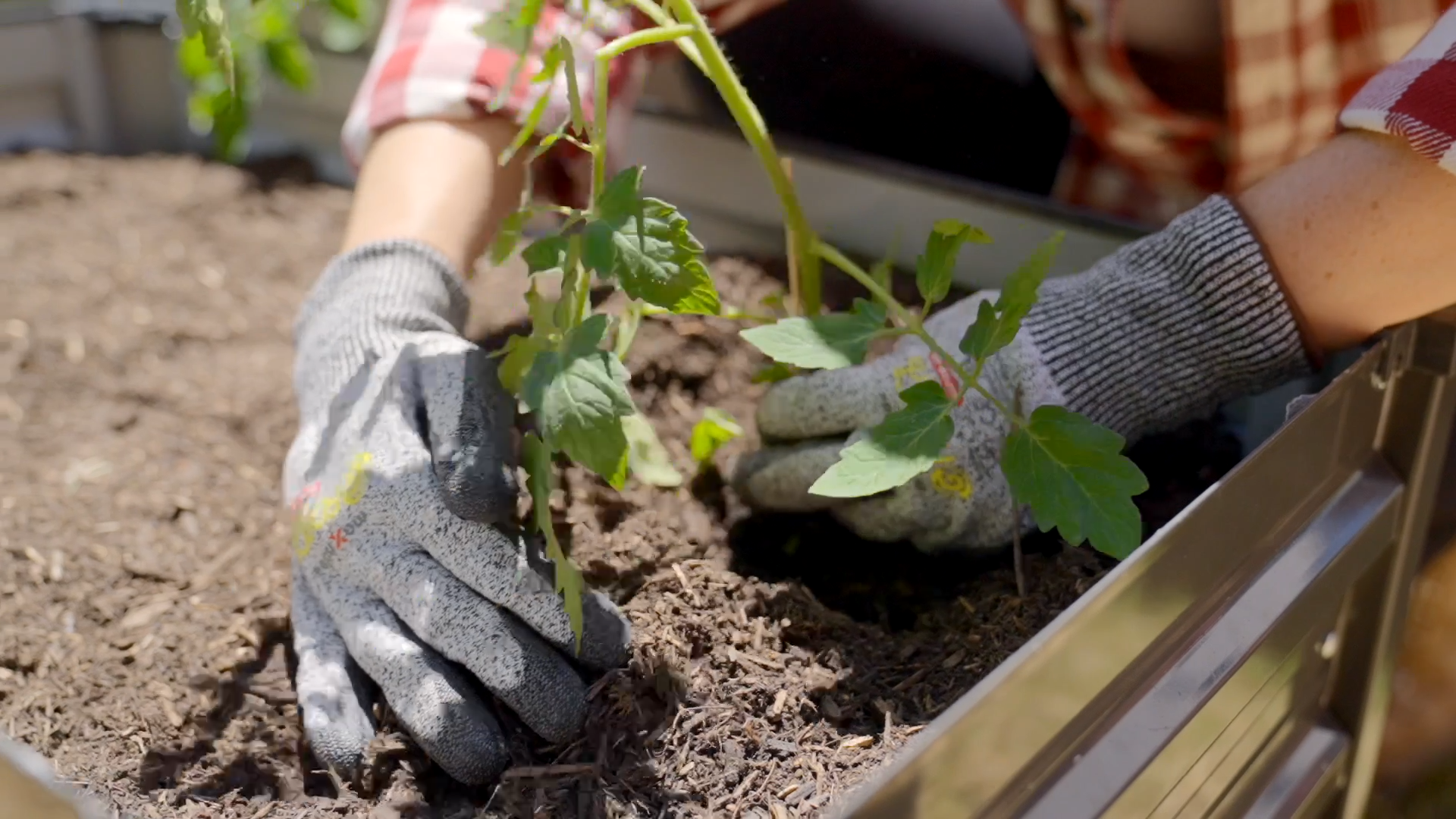
Do add the right soil mix
Soil is everything when it comes to raised garden beds and growing vegetables. Getting it wrong means your plantlings won’t grow or reach their potential.
The good news is that you have full control over what goes into your raised bed—unlike in-ground beds—and you can add the perfect blend.
Mix it yourself using:
- 50% quality compost – Use homemade compost, mushroom compost or certified organic compost to provide rich nutrients and support soil biology.
- 30% topsoil – Choose loamy, weed-free and screened soil to give structure and support root growth.
- 20% aeration material – Add coarse sand, coconut coir, perlite or pea straw to improve drainage and airflow.
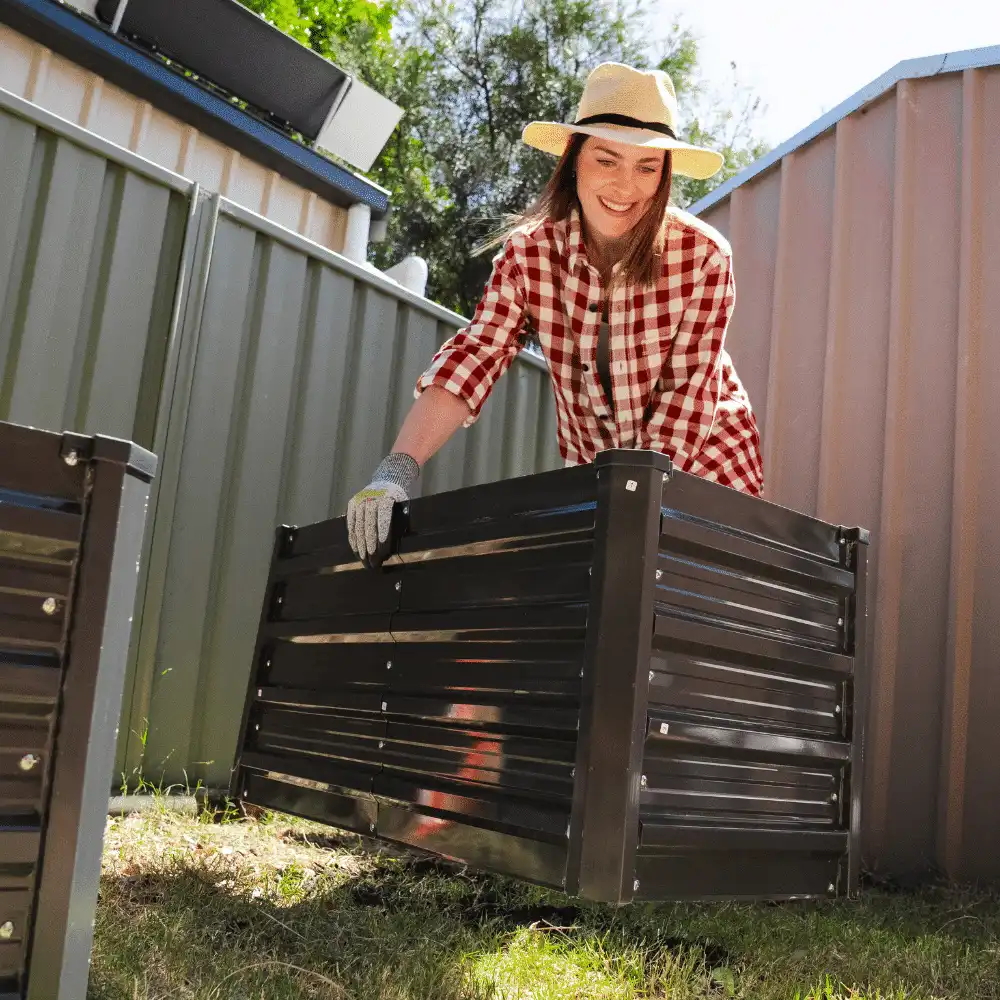
Do ensure it’s ergonomically friendly
Get the height of your garden bed right, and your back, knees and hips will thank you! If you’ve got to bend too low to tend to your vegies or plants, you’ll be sore before you harvest your first tomato. Go too high, and it’s just awkward.
Jack’s tip? Waist height is the sweet spot. It’s easy on your body, perfect for planting, and just the right level to admire your leafy empire.
Here’s a quick guide:
- 70–90 cm high = ideal for standing gardening without bending
- 45–60 cm high = good for seated gardening, wheelchair access
- 40-60 cm high = perfect if your kids want to join in and get their hands dirty
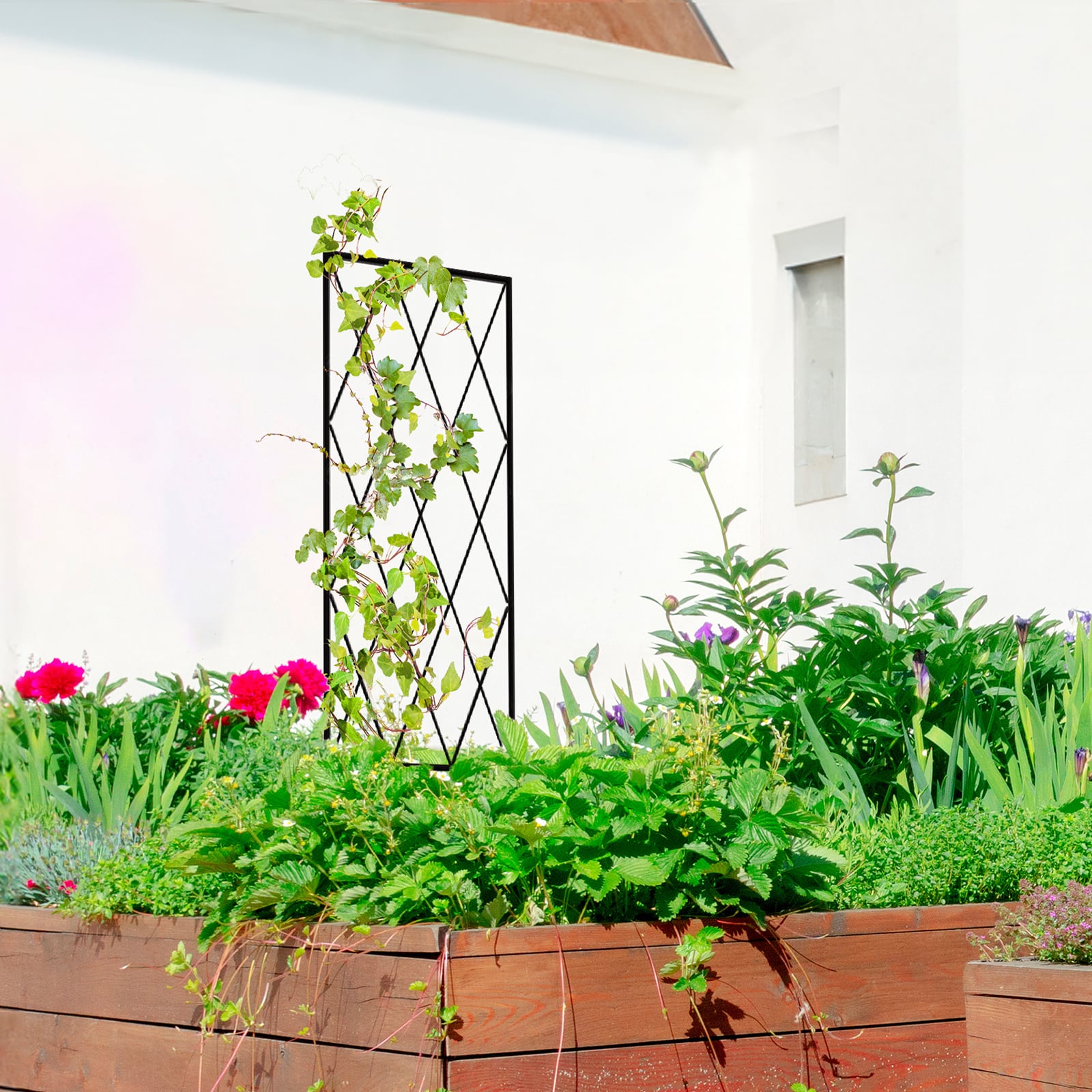
Do get into companion planting
Don’t just pop your plants and vegies in any old combo. Some plants are better mates than others. Companion planting is all about growing varieties side by side that help each other thrive.
Here are a few classic pairings:
- Tomatoes + basil – Not just a tasty duo on your plate. Basil helps repel pests and makes your tomatoes even tastier.
- Carrots + onions – The onion’s strong smell masks the scent of carrots, confusing pests and keeping your crop safe.
- Lettuce + chives – Chives deter aphids and other leaf-munchers from your leafy greens.
- Lavender + roses – Lavender attracts pollinators and repels aphids, helping your roses bloom big and bold.
- Marigolds + just about anything – These bright beauties deter nematodes and aphids, making them great neighbours for both vegies and ornamentals.
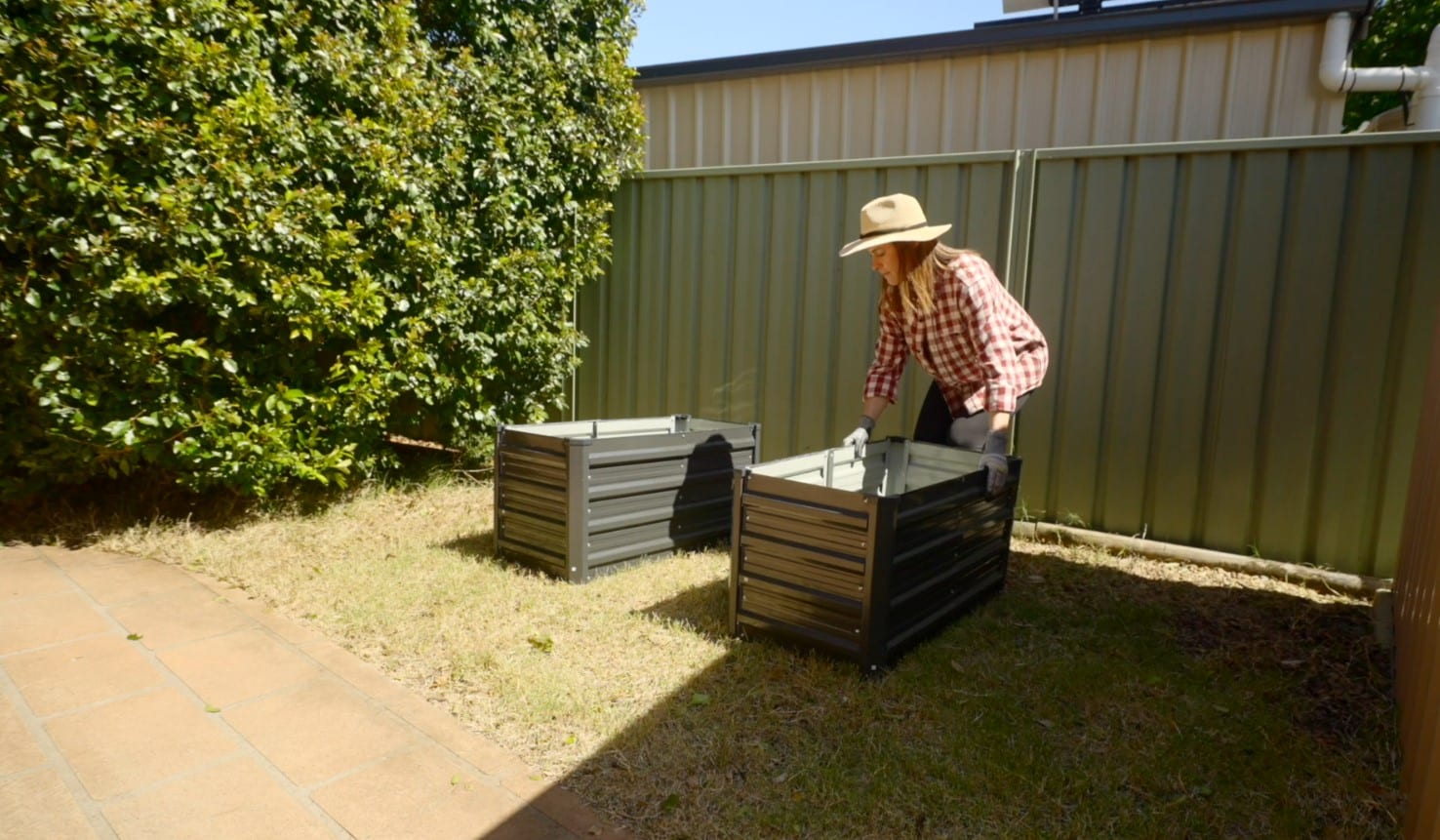
Do set up smart bed watering
There’s a better way to water than dragging the hose out every day! Setting up easy irrigation saves you time and H2O, especially in our hot Aussie summers when the heat hits hard.
Two Jack-approved methods are: drip irrigation and soaker hoses.
- Drip irrigation slowly delivers water right to the base of your plants. It’s super precise and helps cut down on waste. It’s perfect if you’ve got thirsty vegies or deep-rooted plants.
- Soaker hoses weep water along their length. They’re great for garden beds and easy to snake around your plants. Just turn them on and let them do their thing.
Both options keep your soil consistently moist (without drowning it) and help you avoid the old ‘too much or too little’ watering mistake.
If you want to get even cleverer, add a timer and your garden will water itself!
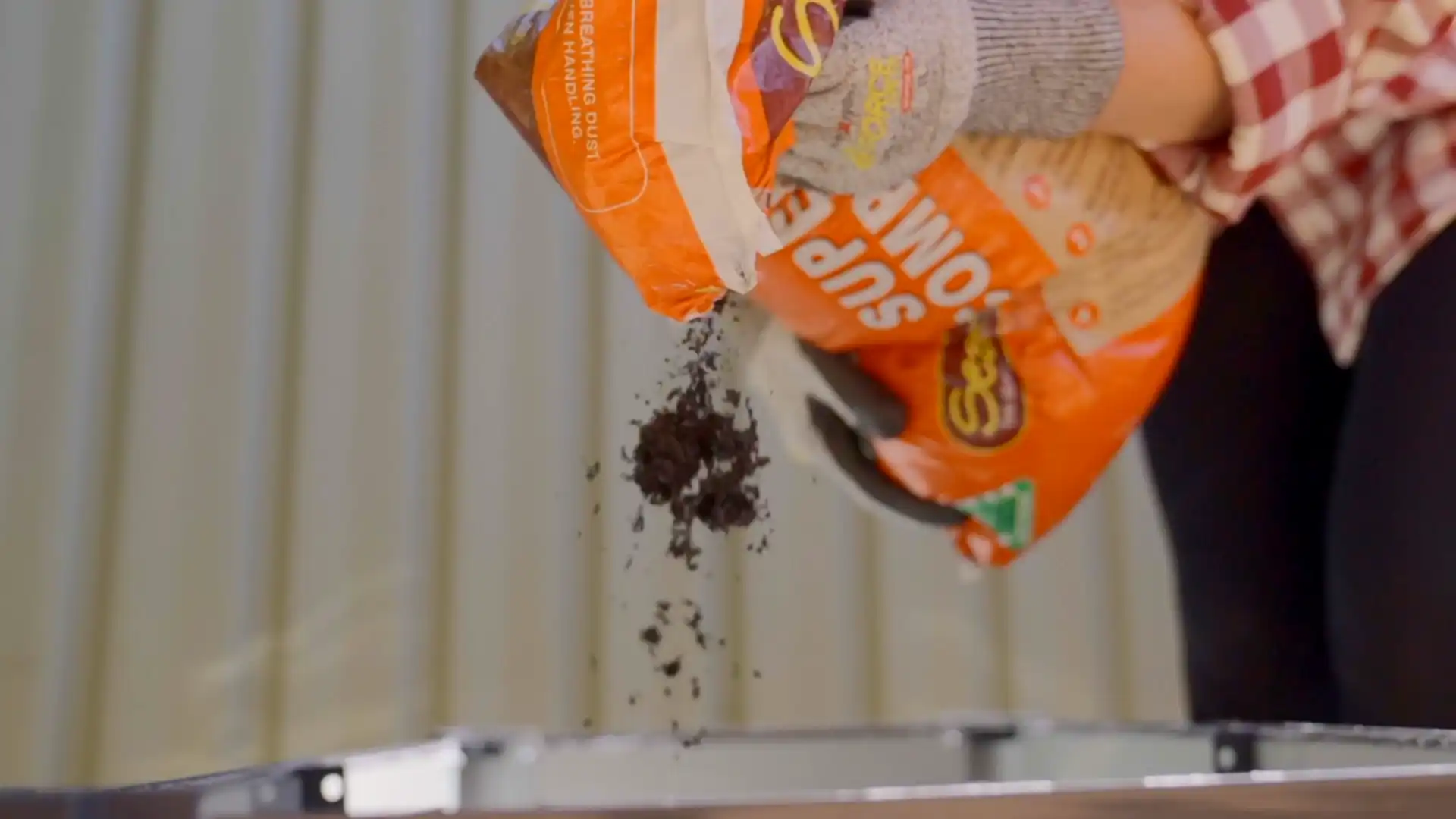
Do top with organic matter each season
Even if you’ve added the perfect soil mix to your garden bed, it will still need feeding from time to time as your plantlings gobble up its nutrients. This means adding organic matter regularly to keep your dirt rich and alive.
Here are your organic options:
- Compost – Decomposed kitchen scraps, garden waste and plant material. It’s packed with nutrients and helps improve soil texture.
- Manure – Well-aged animal manure (like from cows, chickens or horses) adds nitrogen and other nutrients. Make sure it’s composted so you don’t burn your plants.
- Mulch – Materials like straw, bark chips or shredded leaves spread on top of soil to keep moisture in and weeds out. As mulch breaks down, it adds nutrients.
- Green manure – Plants like clover or beans you grow and then dig back into the soil to boost fertility naturally.
- Compost tea – A nutrient-rich liquid made by soaking compost in water. It’s great for watering plants and boosting soil life. But definitely not for afternoon tea!
The result will be bigger, tastier and healthier plants and edibles.

Do rotate your crops every year
Don’t plant the same vegies in the same spot every year. That’s a quick way to tire out your soil and invite pesky diseases.
Crop rotation means moving your plants around each season to keep soil healthy and happy. It stops bugs and diseases from settling in and helps your soil stay rich in the nutrients your plants need.
For example: If you plant tomatoes this year, grow leafy greens like lettuce or spinach in that spot next year. Then follow with root veggies like carrots or beets the year after.
6 raised garden bed don’ts
Now to the ‘what not to dos’. Don’t make these raised garden bed mistakes, or you’ll be in hot soil!

1. Don’t overfill with untested soil
Don’t go too crazy when heaping in your soil. Going overboard, especially without testing your dirt first, can cause problems.
Too much soil can compact, making it hard for roots to breathe and water to drain properly. You might also end up with nutrient imbalances that stunt plant growth. Before filling your raised bed, test your soil or mix it with quality compost and other amendments to keep everything balanced and healthy.
How to test your soil mix
You can buy a home soil test kit from most garden centres or hardware stores (including Bunnings). These usually test:
- pH level (acidic or alkaline)
- Basic nutrients (nitrogen, phosphorus, potassium)
For most plants, aim for a pH between 6.0 and 7.0, and medium levels of nitrogen, phosphorus, and potassium for balanced growth.

Don’t crowd your plants or vegies
Packing your plants too close might seem like a good way to make use of the space in your garden bed, but it actually makes your growers stress out!
Crowded plants compete for light, nutrients and water. And that means smaller, weaker crops. Use spacing charts for popular vegies and herbs to give each plant enough room to stretch and grow.
Here’s a quick spacing guide for some popular varieties:
Vegies and herbs
- Lettuce, basil, parsley, thyme: 20–30 cm
- Carrots, coriander: 5–20 cm
- Beetroot: 15–25 cm
- Tomatoes, capsicum, broccoli: 40–60 cm
- Zucchini, mint (in pots): 60–90 cm
Flowering plants
- Marigolds: 20–30 cm
- Petunias: 20–30 cm
- Lavender: 30–45 cm
- Sunflowers: 30–60 cm
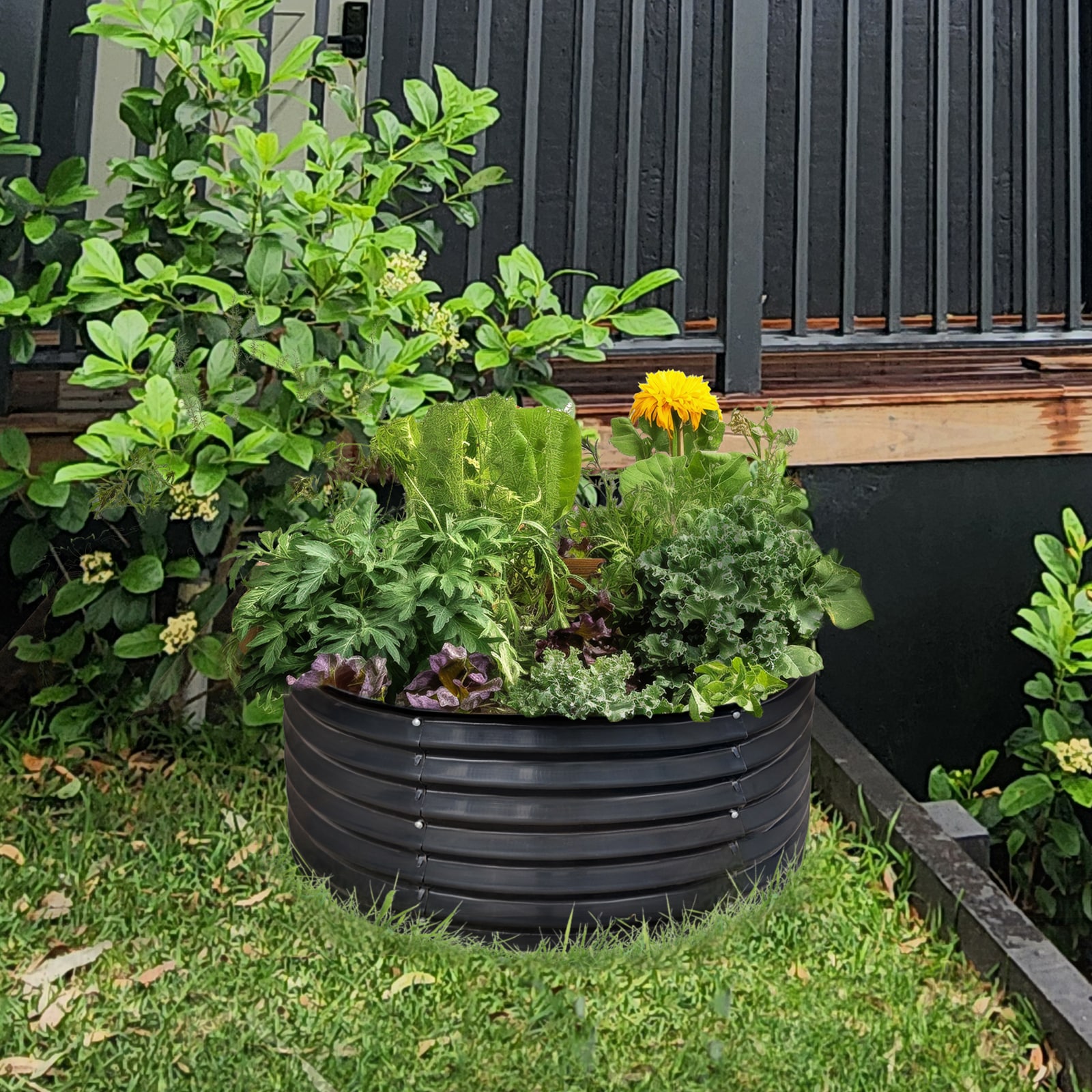
Don’t forget a drainage solution
Good drainage is key to happy roots. So if your raised bed holds water like a puddle, roots can rot and your plants and vegies will cry for some dry!
Here’s how to keep things from getting too soggy:
Step 1: Add a layer of gravel at the bottom:
- 5 cm – Fine for small or shallow beds with decent drainage.
- 10 cm – Better for deeper beds or if you’re in an area with heavy rainfall or clay soil.
Step 2: Use landscape fabric to separate soil from stones, or drill extra drainage holes if your bed’s on the shallow side.

Don’t use treated timber without a liner
Treated wood is a common garden bed building material. But some treatments can leach chemicals into your soil. Not great if you’re growing food, or love an organic garden!
Because of this, make sure you always line your bed with a safe barrier like heavy-duty plastic or a pond liner to keep chemicals away from your plants. Better still, choose untreated hardwood, cedar or composite materials designed for garden use.
Alternatively, opt for one of our food-safe, pre-fab, powder-coated Square Raised Garden beds. They offer a stylish Colorbond raised garden bed look.
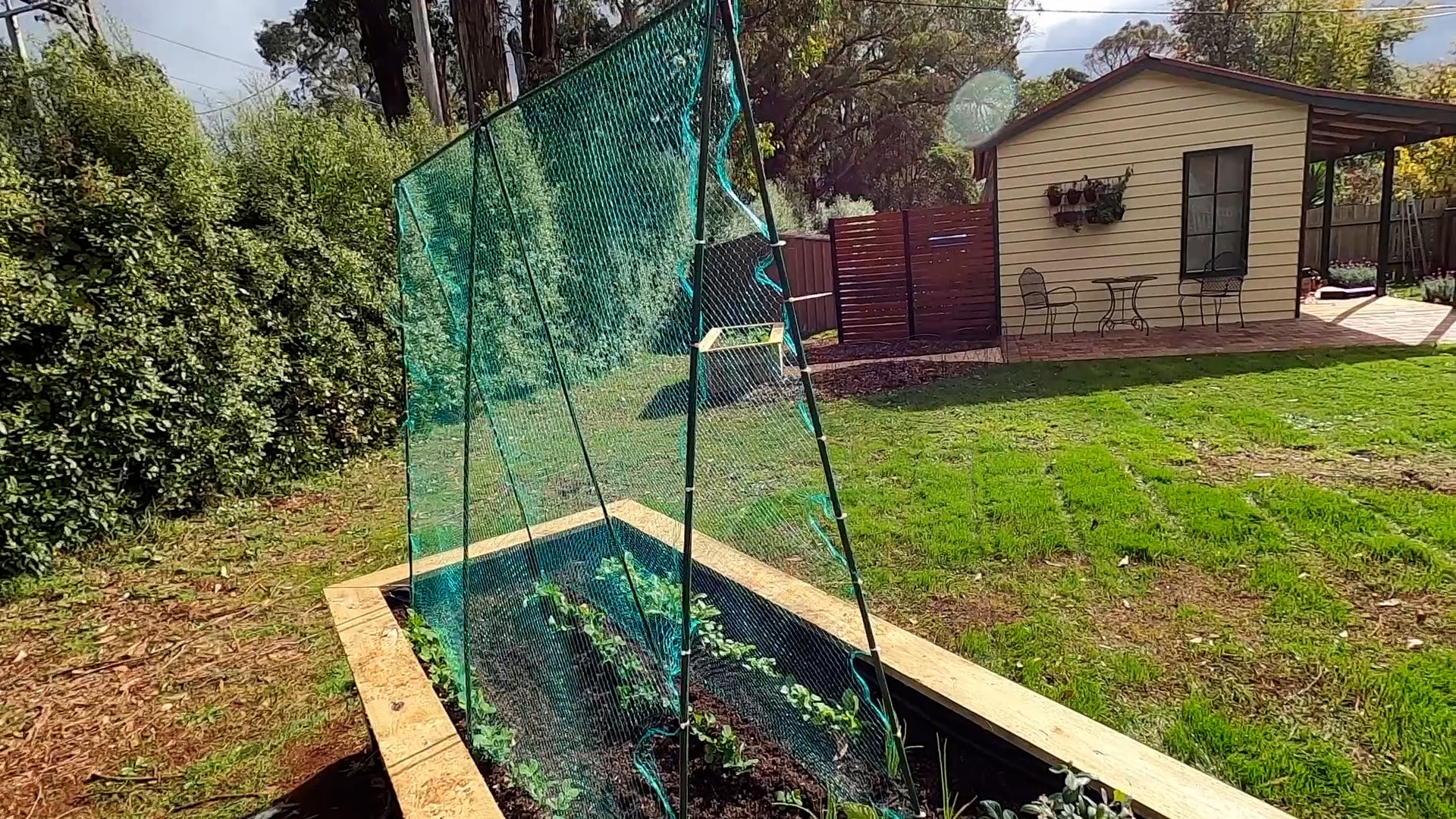
Don’t forget to block and prevent pests
Pests like aphids, slugs, snails, whiteflies, caterpillars and earwigs love your garden as much as you do. But you don’t have to let them destroy it!
Here are some ways to keep those pesky pests at bay:
- Use netting or row covers to protect plants during vulnerable growth stages.
- Plant companion flowers such as marigolds and nasturtiums to naturally repel insects.
- Handpick larger pests like slugs, snails, and caterpillars regularly.
- Keep your garden tidy by removing dead leaves and debris where pests hide.
- Encourage helpful insects like ladybugs and lacewings that eat harmful pests.
- Use organic sprays such as neem oil or insecticidal soap as a gentle pest deterrent.
- Water in the morning to reduce dampness that attracts slugs and snails.
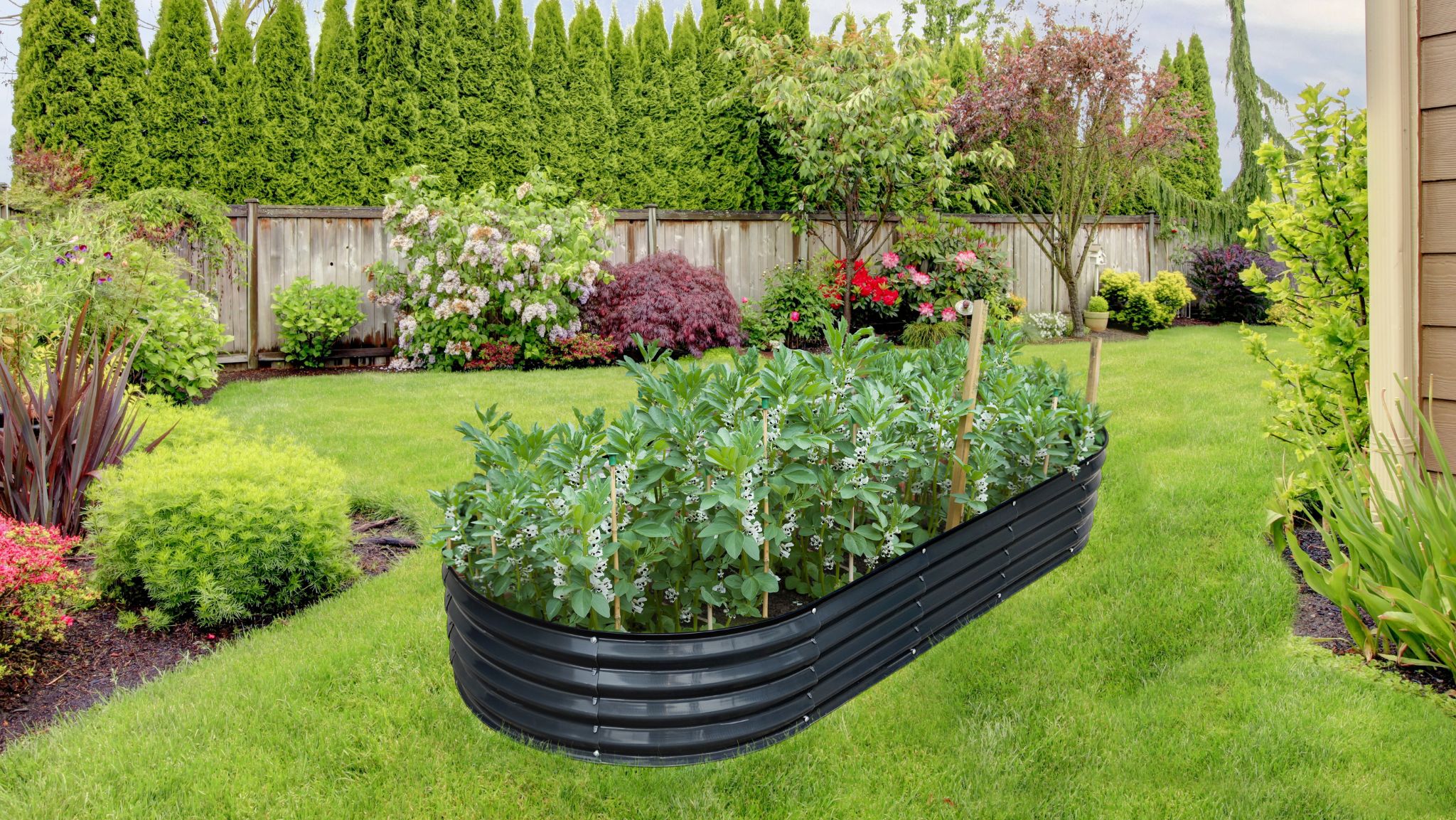
Don’t skip seasonal maintenance
Raised garden bed needs a bit of TLC all year round. Here’s a quick season-by-season maintenance guide:
Spring
- Refresh soil by adding compost or balanced fertiliser.
- Test soil mid-season to check nutrient levels and adjust feeding if needed.
- Start planting warm-season crops and continue staggered planting where possible.
Summer
- Mulch to retain moisture and keep roots cool.
- Water deeply and regularly, preferably in the early morning.
- Succession plant short-season vegies like lettuces and beans to keep your harvest going.
- Monitor for pests and diseases, and treat early if needed.
Autumn
- Plant cool-season crops, such as leafy greens, brassicas, garlic, and onions.
- Harvest remaining summer crops and remove spent plants.
- Add organic matter, such as compost or leaf mould, to replenish nutrients.
- Prepare beds for winter by applying mulch or sowing cover crops.
Winter
- Cover beds with mulch or cloches to protect soil and roots from frost.
- Clear away dead plants and debris to reduce disease risk.
- Sow winter crops if suitable for your region (e.g. broad beans, peas, garlic).
- Plan your spring planting and order seeds early.
Related: How to erect a raised garden bed with Retain-iT
Handy Jack tip – Don’t have the outdoor space for a full-sized raised bed to grow herbs, vegies or plants? Pots and planters are the perfect alternative. They offer the same benefits but fit on balconies, patios and in small courtyards. Here are some great options from our range:
- Oxy-Shield Café Planter Series and Copa Series – Both offer a contemporary architectural rust look
- Hanging Planters, such as our Garden Up Decorative Baskets, are great if you have less space.
- Garden Up Petite Wall – Perfect when you only have wall space to work with, and can really add to any garden design.
Raised bed gardening FAQs
To wrap up our raised garden bed dos and don’ts. Here are some handy FAQs:
Q: How deep should a raised bed be?
A: 30 cm is a good minimum for most vegies and plants to grow happy roots. But the ideal depth can depend on the size of your raised bed and what you want to grow. Larger beds or deep-rooted plants might need deeper soil, up to 45 cm or more, to thrive.
Q: What’s the best soil mix ratio?
A good rule of thumb is to use about 50% quality compost (homemade, mushroom compost, or certified organic compost), 30% topsoil (loamy, weed-free, and screened), and 20% aeration material (such as coarse sand, coconut coir, perlite, or pea straw). This mix keeps things nutritious and well-draining.
Q: How do I layer my soil – lasagna layering vs. loose fill?
A: Lasagna layering is like building a tasty dish of the same name. Layer organic materials, such as leaves, compost, and grass clippings, to break down slowly. Loose fill is just mixing everything together for quick planting. Both work; lasagna is great for starting fresh, loose fill is easier for ongoing beds.
Q: Can I put raised beds on concrete or patios?
A: Yep! Just make sure your bed has good drainage. Add extra holes or a gravel layer, so water doesn’t pool and drown your roots.
Q: How often should I top up my soil?
A: Plan to top up your garden bed soil with compost or organic matter at least once a season, usually in spring and autumn, to keep your soil healthy and hungry plants happy.
Q: Which pests are most problematic in raised beds?
A: Watch out for slugs, snails, aphids, whiteflies, caterpillars and earwigs. They love a good garden feast. But don’t worry, a few pest barriers and smart plant buddies can keep them in check.
Q: Is drip irrigation worth the investment?
A: 100%! It saves water, keeps the soil moist without overdoing it and lets you focus on growing, not watering. A win for you and your plants!
One final ‘do’: start your garden bed project today!
Now you’re savvy on the raised garden beds dos and don’ts, explore our raised garden bed product range, then head to your nearest local Jack supplier to pick up what you need and get started on your project!
Set up some raised garden beds that have all the ‘dos’ and none of the ‘don’ts’? Why not share some snaps on socials, tagging @meetdiyjack? We’d love to see your beautiful beds, and we might even showcase them in our community!